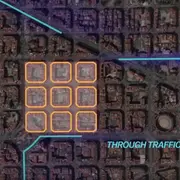A Comprehensive History of the Volkswagen Beetle
 Since its inception, the Volkswagen Beetle has captured the hearts and imaginations of people worldwide.
Since its inception, the Volkswagen Beetle has captured the hearts and imaginations of people worldwide.
Its distinctive shape, reliable performance, and cultural significance have cemented its status as an automotive icon. The history of the Volkswagen Beetle is a fascinating tale of innovation, perseverance, and adaptability, spanning decades and continents. In this article, we delve into the remarkable journey of the Beetle, tracing its origins, evolution, and enduring legacy.
**Origins and Early Development**
The story of the Volkswagen Beetle begins in the 1930s in Germany, a tumultuous time marked by economic instability and political upheaval. In 1934, Adolf Hitler, then Chancellor of Germany, commissioned Ferdinand Porsche, an accomplished automotive engineer, to design a "people's car" (Volkswagen in German) that would be affordable and accessible to the masses. The aim was to create a vehicle capable of comfortably accommodating a family of five while being capable of cruising at speeds of 100 km/h (62 mph).
Porsche, along with his team, embarked on the ambitious task of designing the prototype for what would later become the Beetle. Drawing inspiration from the streamlined designs of the time, they crafted a compact, aerodynamic vehicle with a rear-mounted engine and distinctive round shape. In 1938, the first Volkswagen Beetle, known as the Type 1, rolled off the production line at the newly established Volkswagen factory in Wolfsburg, Germany.
**The Beetle Takes Flight**
The outbreak of World War II interrupted the mass production of civilian vehicles, and the Volkswagen factory was repurposed to produce military vehicles for the German army. However, the Beetle's destiny was forever changed in the aftermath of the war. With Germany's defeat, the British occupying forces took control of the Volkswagen factory. Recognizing the Beetle's potential, British Army officer Major Ivan Hirst oversaw the retooling of the factory and the resumption of Beetle production.
In 1945, the British Military Government revived Volkswagen production, initially for the purpose of providing vehicles for the occupying forces. However, the Beetle's popularity soon transcended its military origins, as it captured the imagination of post-war Europe. Its affordability, reliability, and quirky charm made it an instant hit among consumers eager to embrace a symbol of hope and renewal in the aftermath of war.
**Global Expansion and Cultural Phenomenon**
As the demand for the Beetle grew, Volkswagen began exporting the iconic car to markets around the world. In the 1950s and 1960s, the Beetle became synonymous with the counterculture movements sweeping across Europe and the United States. Its association with freedom, individuality, and nonconformity made it the vehicle of choice for a generation of young people challenging societal norms and embracing new ideals.
The Beetle's popularity soared to new heights as it starred in movies, adorned album covers, and became a symbol of peace and love during the turbulent 1960s. Its distinctive shape and reliable performance endeared it to millions of drivers worldwide, cementing its status as a cultural phenomenon.
**Evolution and Adaptation**
Over the years, the Volkswagen Beetle underwent numerous design modifications and technological advancements to meet changing consumer preferences and regulatory requirements. In 1967, Volkswagen introduced the "Super Beetle," featuring enhanced suspension and a redesigned front end for improved handling and comfort. Subsequent generations of the Beetle incorporated innovations such as fuel injection, electronic ignition, and safety features to enhance performance and safety.
In 1998, Volkswagen launched the "New Beetle," a modern reinterpretation of the classic design that captured the spirit of the original while incorporating contemporary styling and amenities. The New Beetle appealed to a new generation of drivers while paying homage to its storied heritage. However, despite its initial success, changing market dynamics and shifting consumer preferences led to the discontinuation of the New Beetle in 2019.
**Legacy and Enduring Impact**
While production of the Volkswagen Beetle may have ceased, its legacy lives on in the hearts and minds of enthusiasts worldwide. The Beetle's timeless design, cultural significance, and enduring popularity ensure its place in automotive history. From its humble beginnings as a "people's car" to its status as a global icon, the Volkswagen Beetle has left an indelible mark on the automotive industry and popular culture.
Today, vintage Beetles continue to command attention at car shows, rallies, and museums, serving as tangible reminders of a bygone era. The Beetle's influence can be seen in the countless cars that followed, from compact economy cars to retro-inspired models paying homage to its iconic design.
In conclusion, the Volkswagen Beetle's journey from concept to cultural phenomenon is a testament to the power of innovation, resilience, and the enduring appeal of a timeless design. As we reflect on its remarkable history, we celebrate the spirit of ingenuity and imagination that continues to inspire generations of drivers around the world. The Volkswagen Beetle may no longer grace the roads in new form, but its legacy will forever endure, leaving an indelible mark on the fabric of automotive history.
Mind Detour offers humorous, educational and interesting articles and videos to detour your mind from the everyday grind.
Be sure to follow us on Twitter and like our page on Facebook.
Thank You for visiting my site, I really appreciate it! Please do me a huge favor and share my articles with your friends on social media.



